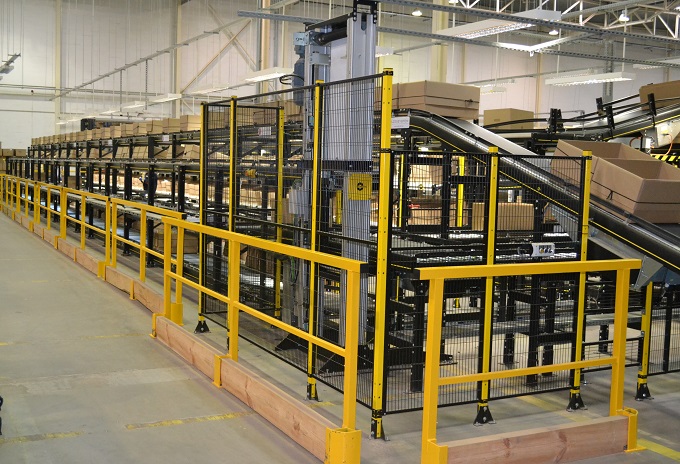Smyk is a retail chain with children’s products, including toys. It has been present in Poland for four decades and runs 140 shops in shopping centres. The company also has its own online shop. Due to the development of the network and increasing diversity of products in physical shops, the number of goods to be processed has started exceeding the warehouse capacity.
Smyk has its branches also in Russia, Ukraine and Rumania. The company plans to develop all sales channels.
Agility and operational capability are becoming especially significant in the age of a common trend expressed in a popular saying “be multichannel or die”. For Smyk it means customer service through three distribution channels: physical shops in Poland and abroad, franchise partners abroad and online shopping. Each of these channels has different dynamics, product range and service requirements and seasonality, depending on the climate and culture of the given market” – says Michał Janikowski, Supply Chain Director, Smyk.
Sorter doubled efficiency
For over ten years, Spedimex has been providing Smyk with storage and distribution services. Among its recent high-profile developments, the company implemented an automated sorter in the warehouse, in the city of Łódź which has accelerated the logistics of Smyk.
It helped to achieve more than two times higher process efficiency (from 40 thousand to even 100 thousand items per day), without the need to expand the storage space and workforce. The biggest potential was hidden in the picking process.
The sorter operates on the basis of the pick-by-light system. This method is based on the light system where the list of products is replaced by a digital display using signal diodes.
The system suggests the actions that should be performed, which minimizes the risk of potential errors.
New system increased picking speed
The sorter is based on conveyors with tailor-made software. It enables order picking in parts, that is without the necessity to process the whole order, so as to prepare a concrete batch and send it to the receiver right away.
After the initial order picking, the boxes with individual labels would be transported onto the sorter’s belt. The label is scanned, and the system knows the type and quantity of items on the feed belt. Each entrance to a given node has a reader installed which checks if the items are needed in this section. If yes, the boxes are pushed to the section with automated outriggers. Then, the display shows the number of items to be packed. The person responsible for picking removes the necessary quantity and puts it in the boxes.
After the box is full, the operator pushes the unit onto the conveyor, and the box is transported to the next stage in a control zone, where the quality and quantity is verified. The box is automatically closed, labeled and sent to the final sorter, where the goods are placed on pallets, and waits for loading in the order consolidation zone.

Photo: Spedimex
The implementation was divided into three stages: installation of the sorter, software development and modification of the process itself. It was preceded by a pilot project.
The solution influenced both accuracy and speed of order picking. The efficiency of the process and throughput of the warehouse increased. In effect, automation simultaneously improved also work of a picking team. The system suggests employees the tasks they should do, which significantly reduces the risk of potential errors.
Time needed to get used to it
An important aspect of the new solution is to increase worker comfort and ergonomics. Feed boxes are transported to each section directly with the use of conveyors (the operator does not have to go for them). Each person has their locations assigned and picks up empty boxes from the same place and without any additional movements removes empty feed boxes.
However, the apparent benefits did not encourage the team to immediately appreciate the changes introduced.
The employees who were accustomed to a totally different system of work were sceptical about the new solutions, and the change of mentality was progressing gradually. Their concerns were connected with work and the equipment itself, as well as the completely new process. Slowly but surely, the employees started enjoying intuitive and easy operation of the sorter. They saw for themselves that they can work more efficiently and do more than it was possible as recently as a year ago” – underline the managers of the warehouse in Łódź.
Optimum efficiency is today from 70 thousand to 100 thousand of items per day.
Automated solutions, in addition to the natural acceleration of operations, have an advantage of „power reserve” which can be used in the periods of the biggest activity” – concludes Michał Janikowski.
Photo: Pixabay/Falco









